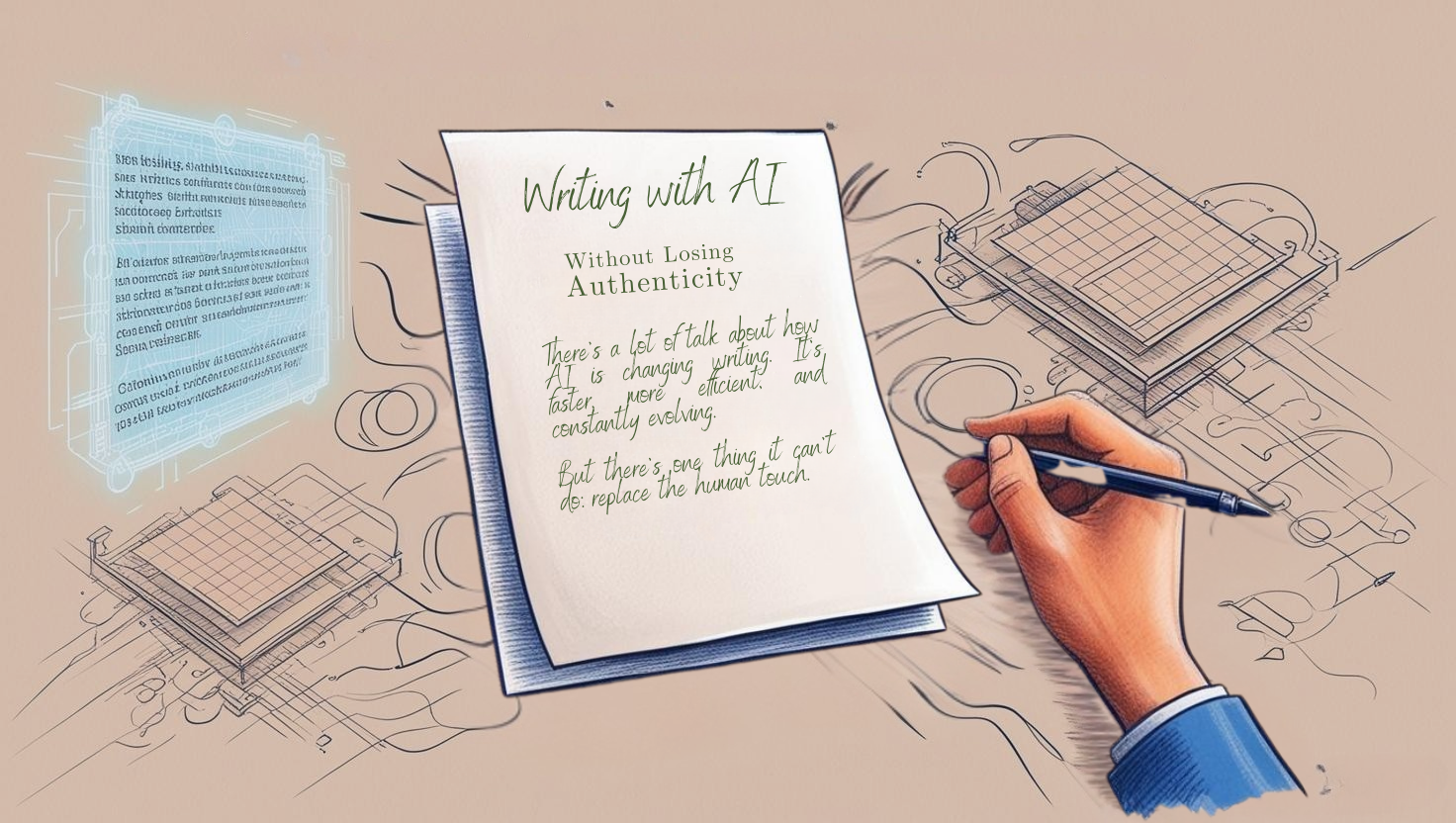
There’s a lot of talk about how AI is changing writing. It’s faster, more efficient, and constantly evolving. But there’s one thing it can’t do: replace the human touch. Writing isn’t just about getting words on a page—it’s about connection, creativity, and authenticity. These are the hallmarks of truly impactful writing, and they require something AI can’t replicate: your unique perspective.
So, how do you integrate AI into your process without losing what makes your work meaningful? The answer lies in balance—using AI as a tool to support your efforts, not define them. By understanding how to harness its strengths while staying true to your voice, you can enhance your process and create work that feels human, even in an AI-assisted world.
Three Ways to Keep Your Authenticity
When you use AI thoughtfully, it becomes a creative partner—not a replacement for your skills or instincts. Here are three practical strategies to help you stay in control while embracing the efficiencies AI offers.
- Let AI Do the Heavy Lifting—But Stay in Control
AI excels at tackling the repetitive or time-consuming tasks that can bog down your creative process. It can generate ideas, organize outlines, or draft basic copy. For example, if you’re facing writer’s block, AI can produce a starting point that helps you get unstuck. However, it’s important to remember that while AI can provide the structure, the soul of the writing comes from you.
I like to think of AI as a research assistant—it gathers the information and lays the groundwork, but the narrative is yours to build. Use AI to explore multiple angles, brainstorm headlines, or refine structure, but always review the output critically.
Your edits, instincts, and insights are what transform AI-generated text from functional to authentic. This ensures the final piece reflects your unique intent and creative spark.
Tip: Use AI to save time on small, recurring tasks—like formatting or creating email templates—so you can dedicate more energy to the parts of writing that require heart and intuition. By automating the mechanical steps, you free yourself to focus on crafting your message and making meaningful connections.
- Watch for the AI-isms
Every AI tool has its quirks. Some tools lean heavily on clichés, others might default to a formal tone that doesn’t match your brand. These “AI-isms” can make content feel robotic or generic if left unchecked. As the writer, it’s your job to spot these patterns and make adjustments that align with your tone and audience.
For example, I rely on AI to help me organize my thoughts, using conversations with me as a sort of word / phrase bank from which to pull verbiage and tone. I also ban structures–the AI-isms–that I’ve come to recognize as artificial. “Delve,” for example, and starting sentences with prepositions are banned at an account level in my AI tools.
Instead, I use Advanced Voice Mode on ChatGPT (it’s fantastic, really) and have a full conversation deep diving my thoughts on a given topic. Through the conversation, we hone my voice, tone, and messaging; the AI transcribes my words. It saves me time–and relieves my carpal tunnel.
Tip: Keep a running list of your AI’s common patterns or quirks. Over time, you’ll learn how to anticipate and correct these tendencies quickly. Think of it as building a collaborative relationship where you refine the machine’s raw output into polished work that resonates with readers.
- Keep Your Voice Front and Center
The most important ingredient in any piece of writing is authenticity. It’s what connects you to your audience and gives your content its staying power. While AI can enhance productivity, it doesn’t have your experiences, your worldview, or your creative intuition. These elements are what make your work stand out.
Make sure every piece of content reflects your tone, personality, and goals. One way to do this is by setting clear parameters before you use AI. Feed it examples of your past writing so it has a sense of your style. Be specific about the tone you’re aiming for—whether it’s casual, professional, witty, or inspiring. Then, take the time to review the output critically, ensuring it aligns with your vision.
Tip: Think of your writing style as your fingerprint—unique, identifiable, and impossible to duplicate. When using AI, focus on preserving the parts of your voice that make your work unmistakably yours, whether that’s a conversational tone, bold opinions, or the ability to tell a story that resonates deeply with your audience.

